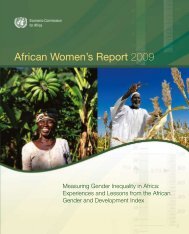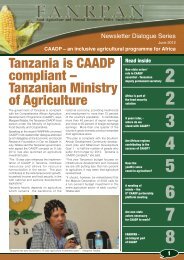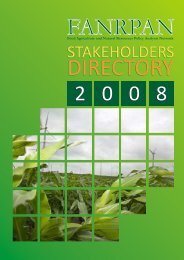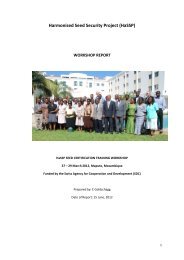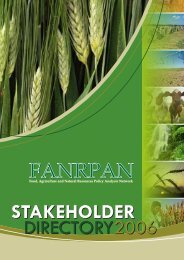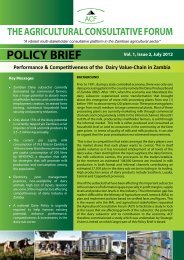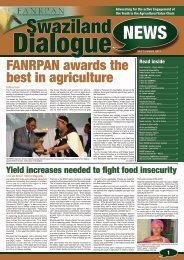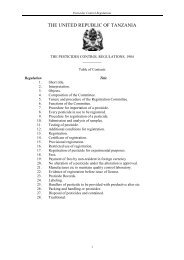Community-driven development decision tools for rural - IFAD
Community-driven development decision tools for rural - IFAD
Community-driven development decision tools for rural - IFAD
- No tags were found...
You also want an ePaper? Increase the reach of your titles
YUMPU automatically turns print PDFs into web optimized ePapers that Google loves.
CDD and production and marketing infrastructureThe most recent generation of CDD projects include components that finance production andmarketing infrastructure, in addition to social infrastructure. The expected outcomes of thesecomponents (i.e. increased agricultural production and increased value added <strong>for</strong> agriculturalproducers) are “private goods”. Marketing infrastructure is generally controlled by local governmentsand leased out to private individuals, wealthy traders, or a CIG of village traders that assumesresponsibility <strong>for</strong> organization and management (O&M) and normally would not include all thehouseholds in the community. <strong>IFAD</strong> has cofinanced a number of such projects with other donorsand has had some difficulty including mechanisms in the project design and the per<strong>for</strong>mancemonitoring system that would guarantee poor community members access to the infrastructure.A widespread practice is to fund the construction of irrigation and marketing facilities with grantsthat cover a large share of the costs. The fact that the government made the grant justifies that theinfrastructure is not turned over to the users; the users are compensated <strong>for</strong> their contribution byhaving right of use and the responsibility to maintain the infrastructure. Government (generally alocal government) may charge a user fee, which generates some revenue <strong>for</strong> the local administration.Charging a user fee is a rather common practice in building marketing infrastructure and somewhatless so in irrigation projects.The production and marketing activities, as well as any other IGA, made possible by the facilitiesare funded by loans, either as part of the financial services component of the project or as part ofparallel initiatives to develop <strong>rural</strong> financial services in the area.CDD, <strong>rural</strong> financial services and microenterprise <strong>development</strong>Rural financial services and microenterprise <strong>development</strong> are components of any projects thatdirectly raise the income of community members and foster the economy at the communitylevel. Supporting such activities is an integral part of a community-based approach to povertyreduction. Making <strong>decision</strong>s about these components involve answering questions that deal withspecialization (e.g. Who should provide the services? What can legitimately be funded bygovernment grants and what should be funded with credit in <strong>rural</strong> financial services?). Theanswers to these questions must be within the project’s targeting strategy, which determines howto reach eligible communities and the poor within those communities and how to reduce therisk of local elite capture.Rural financial services are highly specialized activities. Implementing these activities requiresfunctions and skills present in different organizations than those required in other CDDactivities, such as developing infrastructure, education, or water supply. The <strong>IFAD</strong> documententitled “Decision Tools <strong>for</strong> Rural Financial Services” issued in 2003 provides excellent guidanceon how to structure project support <strong>for</strong> <strong>rural</strong> financial services. The document emphasizes theimportance of sound banking practices and rigorous controls over the use of funds bymicrofinance institutions, irrespective of who their shareholders are. It also points out badpractices which do not sufficiently take into account the nature and requirements of financialservice operations. Examples of such bad practices are <strong>rural</strong> <strong>development</strong> project componentsthat entrust public bodies, such as local or central government administration units, with theresponsibility of financing private goods by making (and trying to recover) loans to individualsor groups of individuals.As discussed earlier in this report, there are several ways to design a <strong>rural</strong> financial servicesproject with different objectives and degrees of community involvement and CDD content. In aconventional view of <strong>rural</strong> finance, savings collection and microcredit organizations transferresources to target clients by a <strong>development</strong> agency whose control is irrelevant to the projectobjectives. For CDD, the community-level financial organizations (Cbanks) are communityownedand community-controlled institutions that achieve project objectives because they49




